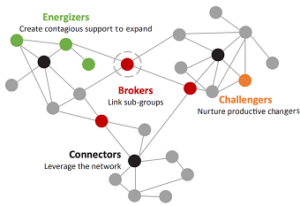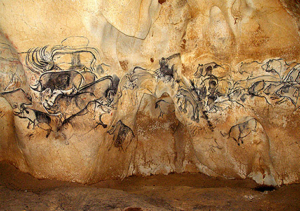
Arquivo para a ‘Information Science’ Categoria
Prudence and happiness
Breaking the rules or getting out of the box, there are even books encouraging throwing everything away, is different from what the Greeks thought, of course a life that is going wrong needs to be analyzed.
even books encouraging throwing everything away, is different from what the Greeks thought, of course a life that is going wrong needs to be analyzed.
I used the word happiness, because the word used by the Greeks is “Good life”, which in its current connotation means eating, drinking, spending and sleeping, but it was not the conception of Aristotle and other ancient philosophers.
In Nicomachean Ethics, the philosopher demonstrates that to achieve the “good life” we must take into account our instinct, sensitivity and intelligence and, through the conjunction of these three elements, cultivate our best side, because, for example, instinct can be a trait of personality that does not lead to balance, this is where the idea of prudence comes in.
In book governs science, and prudence (phónesis) governs ethics, however the Greeks believed in an absolute science, capable of knowing the deepest structure of Being.
Such a core is eternal, immutable, absolute, and the ethics that is a consequence of this is practical science.
In it, prudence governs temperance, which is what will govern our instincts, it is what determines the good exercise of temperance, the wise person in ethical decisions is the one capable of finding the middle ground (ne quid nimis: nothing in excess), that is one of the practices.
It contains virtue (arethé) and in the soul there are three types of functions: irrational (nutrition, growth, etc.), motivational (generating actions) and rational (linked to our cognitive capacity that makes us capable of achieving true).
Just to give a practical example, whoever controls personal finances could include a description field in inputs and outputs, an explanation of the reason for spending or obtaining the resource.
For Aristotle, virtue is something that occurs in the soul, that is, our interiority, so he divides the virtues into ethical (courage, generosity, friendship, justice, etc.) and dianoetic (wisdom, temperance, intelligence, etc.).
So we can change a saying and now say that “the habit makes the monk”, now not with outer clothing, but with inner clothing, virtues create “virtuous circles” in us.
Prudence biblical, moral or expendable virtue
In times of war, violence and anger, a virtue to remember is prudence.
to remember is prudence.
As a philosophical meaning, prudence is seen by Aristotle as intellectual virtues, divided into 5 classes: science, wisdom, intelligence, techniques and prudence, so it can be seen as an ascetic morality, but it has historical and philosophical meaning , thus better dividing morality.
As a biblical virtue, prudence means the ability to judge between malicious and virtuous actions, not only in a general sense, but with reference to appropriate actions in a given time and place, it helps to discern what is good, fair and the means to achieve them.
As a habit, from a philosophical and moral point of view, is considered as knowledge that is acquired through habit, knowledge in general is for Aristotle indicates something that is not possessed simply by custom or conditioning, but rather as a disposition by which something or someone is well or badly disposed, either in relation to themselves, or in relation to something else (ARISTOTLE, Met. I, v. 20, 1022, b, 10-12).
We acquire these through study, demonstration, training and argumentation, so that we obtain a complete notion of a given field, master it masterfully and begin to have stable qualities of the subject that are difficult to lose (TOMÁS DE AQUINO, S.T., Iª. IIae q. 51 to 2 co.).
So it is not simply a matter of taste or will, but of how we understand intellectually and how we process habits, so prudence is a virtue acquired through understanding, practice (habit) and through stable conditions of the subject.
A return to peace and “good dispositions of the soul” cannot be obtained without the practice of these habits, if they are socially valued and without the subject and society remembering them as virtues that must be socially inserted to return to stable conditions of Society.
ARISTÓTELES. (2002). Metafísica: ensaio introdutório. Greek text with translation and commentary by Giovanni Reale, Transl. Marcelo Perine. Brazil. São Paulo: Loyola,. 696 p.
TOMÁS DE AQUINO.(2001-2006) Suma teológica. Brazil, São Paulo: Loyola, 9 v.
Wear in Ukraine and humanitarian crisis in Gaza
While the war enters a stage of attrition in  Eastern Europe, European governments already want some type of peace agreement and the stage is of attrition for Russian and Ukrainian forces, in the Gaza Strip the land advance of Israeli troops worsens the humanitarian crisis .
Eastern Europe, European governments already want some type of peace agreement and the stage is of attrition for Russian and Ukrainian forces, in the Gaza Strip the land advance of Israeli troops worsens the humanitarian crisis .
The UN, the Arab countries and several Western countries are trying to forge some kind of agreement that could lead to a ceasefire and allow for more effective humanitarian aid, the situation is a humanitarian crisis, there is a lack of food, medicine and water, the situation in hospitals is also precarious, and Palestinians report bombing in nearby areas.
The death toll in the Gaza strip has been close to 10,000 since October 7th, and therefore tomorrow will complete one month, Israel says it has now entered a second phase and there is no desire for any proposal to cease fire, but the pressure West Bank grows, while Hamas seeks Arab allies, in addition to traditional West Bank groups and Hezbollah’s base in southern Lebanon.
All over the world there are demonstrations by Palestinians, one held in Portugal was attended by the president of Portugal, Marcelo was questioned by a pro-Palestinian group or gave his position with the phrase: “Against terrorism, but in favor of a Palestinian State ”, because pro-Palestinian groups do not see Hamas as “terrorist”.
The pope called the leader of Mahmoud Abbas who spoke about the urgency of creating humanitarian corridors, and in return the rabbis scheduled an audience with the pope, who only gave his speech as he was not feeling well.
According to the director of the Holy See Press Office, Matteo Bruni: “The Pope expressed regret at what is happening and recalled the position of the Holy See, hoping that we can reach a two-state solution and a special status for Jerusalem.”
The fact that Europe has entered a path of peace, even due to the exhaustion and immense effort it makes to support Ukraine, also in the Gaza Strip international pressure is strong and the only problem is Israel’s irreducibility.
This morning (06/11) it was published that the Pope yesterday spoke with the President of Iran, Ibrahim Raisi about the crisis in the Gaza Strip, yesterday 5/11 after the Angelus prayer (at noon in Rome).
Unitas multiplex, networks and the beatitudes
Among the main concepts developed by Edgar Morin are cosmic Dasein (similar to Heidegger’s Dasein but expanded to the cosmic and similar to Teilhard Chardin’s Cosmic Christ), hominization and human identity, which is also linked to anthropolytic, but a fundamental and new is Unitas Multiplex.
Edgar Morin are cosmic Dasein (similar to Heidegger’s Dasein but expanded to the cosmic and similar to Teilhard Chardin’s Cosmic Christ), hominization and human identity, which is also linked to anthropolytic, but a fundamental and new is Unitas Multiplex.
According to Jean Ladriére Unitas Multiplex is “a system is a complex object, made up of distinct components joined together by a certain number of relationships”, and this both combines with the concept of social networks (not media) and Morin’s complexity, and Here we will establish a set of relationships with the biblical virtues of the beatitudes.
In a complex system, a certain number of relationships may be broken, what in social networks are called “structural holes” (Burt, 1992), weak ties (Granovetter, 1973) and small worlds of Duncan Watts (1998)
A system represented as a social network is a structure that connects nodes (forms a mathematical graph), generally each of these nodes are people, and links between nodes, representing relationships between these people (GRANOVETTER, 1973).
For Granovetter, bridges are links that enable weak ties, those that are on the periphery of the network or that are only reached by some nodes.
But neither the network theory nor the unitas multiplex theory establish the virtues that enable greater contact between these nodes, and as all these nodes can be reached, talking about empathy and bonds of solidarity is little, the biblical beatitudes can help.
Jesus climbs a mountain and speaks to a crowd of people, not just the disciples but everyone who wants to hear him (Mt 5:3-12):
“Blessed are the poor in spirit, for theirs is the Kingdom of Heaven. Blessed are the afflicted, for they will be comforted. [the weak ties]
Blessed are the meek, for they will possess the earth. Blessed are those who hunger and thirst for righteousness, for they will be satisfied. [the strong ties]
Blessed are the merciful, for they will obtain mercy. Blessed are the pure in heart, for they will see God. [empathy]
Blessed are those who promote peace, for they will be called children of God. Blessed are those who are persecuted for the sake of righteousness, for theirs is the Kingdom of Heaven!
Blessed are you when people revile you and persecute you and falsely say all kinds of evil against you because of me. Rejoice and be glad, for your reward will be great in heaven” [keeping the net united to the mystical body or “cosmic dasein”].
It seems heroic, or utopian, but if we want a peaceful Homeland, it’s a good recipe.
BURT, R. S. The social structure of competition. In: NOHRIA, N.; ECCLES, R. G. Networks and organizations: structure, form and action. Boston: Harvard Business School, 1992.
GRANOVETTER, M. S. The strength of weak ties. American Journal of Sociology, Chicago, vol. 78, no. 6, p. 1360-1380, May 1973.
WATTS, D. J.; Strogatz, S. H. (1998). “Collective dynamics of ‘small-world’ networks” (PDF), NATURE, VOL 393, 4 June.
Homo economicus and the reduction of Being
Still on the Human Identity Card, chap. 2 of the book Terra-Pátria by Edgar Morin, after a long speech on the prehistoric issue, there are already new advances and discoveries in this sense, such as the Chauvet Cave (discovered by amateur cavers in 1994, including Jean-Marie Chauvet) , show that what is called human subjectivity is something present and intrinsic in man that makes us rethink his “genetic” origin.
book Terra-Pátria by Edgar Morin, after a long speech on the prehistoric issue, there are already new advances and discoveries in this sense, such as the Chauvet Cave (discovered by amateur cavers in 1994, including Jean-Marie Chauvet) , show that what is called human subjectivity is something present and intrinsic in man that makes us rethink his “genetic” origin.
This cave from 32 thousand years ago (photo), from the Paleolithic period, shows through the paintings and environments of a cave that man, even if primitive, had feelings that were far superior to what we think dated back to our era.
Morin shows the fragmentation of this vision of man’s being: “Man’s biological characteristics were discussed in biology departments and medicine courses; psychological, cultural and social characteristics were divided and installed in the various departments of human sciences, so that sociology was unable to see the individual, psychology unable to see society, history accommodated itself apart and economics extracted from the Homo sapiens demens the bloodless residue of Homo economicus.” (MORIN, 2003, p. 61)
Philosophy can only “communicate with humans in experiences and existential tensions such as those of Pascal, Kierkegaard, Heidegger, without however ever being able to link the experience of subjectivity to anthropological knowledge” (idem), and only in the 1950s -60 thoughts appear about “the first approaches to the universal dialectic between order, disorder and organization…” (ibidem) and which will lead us to the basis of a fundamental anthropology.
Morin launches 5 essential points to get out of planetary agony: “• we are lost in the cosmos; • life is solitary in the solar system and probably in the galaxy; • the Earth, life, man, consciousness are the fruits of a singular adventure, with astonishing adventures and leaps; • man is part of the community of life, although human consciousness is solitary; • the community of humanity’s destiny, which is specific to the planetary era, must be inscribed in the community of terrestrial destiny.” (MORIN, 2003, p. 63).
Morin launches 5 essential points to get out of planetary agony: “• we are lost in the cosmos; • life is solitary in the solar system and probably in the galaxy; • the Earth, life, man, consciousness are the fruits of a singular adventure, with astonishing adventures and leaps; • man is part of the community of life, although human consciousness is solitary; • the community of humanity’s destiny, which is specific to the planetary era, must be inscribed in the community of terrestrial destiny.” (MORIN, 2003, p. 63).
Morin’s thought is not a treatise on humanity, but a warning of the dangers that this false imperative economic, power and environmental disaster adventure has led us to.
MORIN, E. and Kern, A.B. Terra-Pátria. Trans. by Paulo Azevedo Neves da Silva. Brazil, Porto Alegre: Sulina, 2003.
A story from history
This is the name of the first chapter of the book Terra-Pátria (Ed. Sulina, 1995) by Edgar Morin, the author’s attempt at the time was to understand the various civilizing processes to guide the world towards a moment in which we would all see ourselves as citizens of the same house.
Terra-Pátria (Ed. Sulina, 1995) by Edgar Morin, the author’s attempt at the time was to understand the various civilizing processes to guide the world towards a moment in which we would all see ourselves as citizens of the same house.
He writes there: “But, however diverse they may have been, they constituted a fundamental and primary type of Homo sapiens society. For several tens of millennia, this diaspora of archaic societies, ignoring each other, constituted humanity” (page 15) and this seems very current.
History “merciless towards defeated historical civilizations, was atrocious without remission in the face of everything prehistoric. The founders of the culture and society of Homo sapiens are today definitive victims of a genocide perpetrated by humanity itself, which progressed to parricide” (page 15), punctuating 10 thousand years in Mesopotamia (the Semites), four thousand years in Egypt , going east “from the Indus and into the Haung Po valley in China” (pg. 16) 2,500 years ago.
This early history is “the emergence, growth, multiplication and struggle to the death of States among themselves; it is conquest, invasion, enslavement, and also resistance, revolt, insurrection; they are battles, ruins, coups d’état and conspiracies […]” (pg. 16) and which seems to be repeated today.
Then this story “began to become ethnographic, polydimensional. Today, the event and eventuality, which erupted everywhere in the physical and biological sciences, appear in the historical sciences”, in which what Edgar Morin calls “homo sapiens-demens” appears.
This “homo sapiens-demens. I should consider the different forms of social organization that emerged in historical time, from Pharaonic Egypt, Periclean Athens, to contemporary democracies and totalitarianisms, as emergences of anthropo-social virtualities” (pg. 17), I return to this reflection because what should be rethought, repeats itself as a cruel cycle.
The author states: “Today, the destiny of humanity poses to us with extreme insistence the key question: can we get out of this History? Is this adventure our only future?” (p. 17).
Morin’s wise and prophetic spirit announces: “Thus, a multiple fermentation, in different points of the globe, prepares, announces, produces the instruments and ideas of what will be the planetary era” (pg. 18), but with serious and civilizational threats.
Your essential question remains: “can we get out of this History?”, it takes wisdom and a historical understanding that seems to escape the great world leaders.
MORIN, E. and Kern, A.B. Terra-Pátria. Trans. by Paulo Azevedo Neves da Silva. Brazil, Porto Alegre: Sulina, 2003.
Escalation of conflicts, the thought of peace
It is incredible that polarization takes over even the discourses of peace, such as the question of the Other and the meaning of what “terror” means, whereas anti-Semitic discourse is emptied and so is the idea of “Nazi” forces, polarization has reached a global scale and can grow.
the discourses of peace, such as the question of the Other and the meaning of what “terror” means, whereas anti-Semitic discourse is emptied and so is the idea of “Nazi” forces, polarization has reached a global scale and can grow.
The war between Ukraine and Russia is also getting worse, with new long-range American military equipment and the arrival of winter makes it dramatic and could escalate from now on.
Praise and defense of Hamas have placed the UN itself in a position of polarity, there is also a discourse that tries to mischaracterize the killing of civilians and innocents as that which is carried out by the Other, so there is no space for dialogue and peace, everything can have a reverse narrative.
Humanitarian aid faces difficulties both from those who want to assist the population and from the governments themselves that make it difficult for civilians to cross and open borders. The land war in Gaza will only worsen humanitarian conditions.
Turkey’s position in favor of Hamas could also disturb the region and escalate the war. This position is very complicated because Turkey is part of NATO and has been important in its position on the passage of grains. Let us remember that in the Bosphorus Strait, the Passing through Istanbul, the city with territory in Europe and the Middle East, is strategic.
In war, it is civilians who lose, and the limits of civility are almost always exceeded on all sides, there are no agreements that can establish clear limits that are respected.
A true philosophy of peace must condemn the conflicting sides, each side’s misguided attempt to establish an acceptable narrative, polarization does not allow.
Which forces will be able to sue for peace? What will happen in a growing escalation of war, with Iran involved? and if China and eastern countries get involved, there will already be issues of tension between the countries.
The hope is that a stifled outcry from those who truly desire peace will come, the forces that are of true humanism could recover hope for a less dangerous world.
What is Love after all
Although Hannah Arendt’s work is not definitive regarding love, the advisor Karl Jaspers himself expressed this, developed and appropriated some fundamental categories in his doctoral thesis “Love in Saint Augustine”.
regarding love, the advisor Karl Jaspers himself expressed this, developed and appropriated some fundamental categories in his doctoral thesis “Love in Saint Augustine”.
According to author George McKenna, in a review of her dissertation, Arendt tried to include a revision in her “The Human Condition”, but it is not very clear in the book (of the Arendt), which is excellent.
If we can also express an expression of this love in ancient Greek literature, such as agape love, the one that differs from eros and philia in this literature, from a Christian point of view the best development made is in fact that of Saint Augustine.
First because he separated this concept from good x evil Manichaeism, a dualism still present in almost all Western philosophy due to idealism and puritanism, then because he was in fact raptured upon discovering divine love, he wrote: “Late I loved you, O beauty so ancient and so young! Too late I loved you! Behold, you lived within me and I was looking for you outside!” (Confessions of Saint Augustine).
Then man must love his neighbor as God’s creation: […] man loves the world as God’s creation; in the world the creature loves the world just as God loves it. This is the realization of a self-denial in which everyone, including yourself, simultaneously reclaims your God-given importance. This achievement is love for others (ARENDT, 1996, p. 93).
Man can love his neighbor as a creation by returning to his origin: “It is only where I can be certain of my own being that I can love my neighbor in his true being, which is in his createdness.” (ARENDT, 1996, p. 95)
In this type of love, man loves the divine essence that exists in himself, in others, in the world, man “loves God in them” (ARENDT, 1996, 95).
The biblical reading also summarizes the law and the Christian prophets as follows (Mt 22, 38-40): “This is the greatest and the first commandment. The second is similar to this: ‘You shall love your neighbor as yourself’. All the Law and the prophets depend on these two commandments.”
Love contains all the virtues: it does not become conceited, it knows how to see where the true signs of happiness, balance and hope are found.
ARENDT, Hannah. (1996) Love and Saint Augustine. Chicago: University of Chicago Press.
Love in western literature
In the previous post we commented on an unusual example in literature which is human love seen from a Christian narrative point of view, there are others of course, but this one is due to the repercussion of Francine Rivers’ work and its recent transformation into a film (2022) and the critics applauded.
In history we can remember some works that marked literature: The Banquet by Plato, The art of loving by Ovid and Sobre el Amor by Plutarco, highlighting in the medieval period The Romance of Tristan and Isolde and Correspondences of Abelard and Heloise.
The philosophical style of the Banquet where there is a predominance of mythological elements that explain or denote love, perhaps hence the idea of platonic love, but which has nothing sublime or non-carnal, what commentators say is that there are homoerotic relationships that are part of the dialogue between partners in relationships.
If there is something elevated, it is in Socrates’ dialogue that defines the so-called philosophical love, which is outside the sentimental sphere and inserted in an idealism (I always remember here that it is for the Greeks to remember Being in its essence, and not something that lives only in mind), is a love that is related to beauty and good.
Ovid (45 BC – 18 AD) is not interested in achieving this asceticism towards a deified love, he seeks to find the necessary tools to realize a more sensual love in a carnal world.
Ovid does not restrict love to the conjugal sphere, Plutarch (45 – 120 AD) sees it within a social and political institution, it is a “path” within marriage towards happiness, like an asceticism of the type that the Greeks considered conceived, this is not a spiritual asceticism.
The romance of Tristan and Isolde and the Correspondences of Abelard and Heloise must be understood in a reality dominated by Christian philosophy in medieval Europe, where the Love of God is indisputable, but love as a union of two bodies is still subject to debate.
This type of romance, inserted in the troubadour tradition, is imbued with a “courtly” element; we find an interesting description of this love in the work of Denis de Rougemont:
What they love is love, it is the very fact of loving. And they act as if they had understood that what opposes love guarantees it and consecrates it in their hearts, to exalt it to infinity in the instant of the absolute obstacle that is death. Tristan likes to feel love, much more than he loves Isolde, the blonde. And Isolde does nothing to keep him close to her: a passionate dream is enough for her.
Among modern novels, I would highlight among the most characteristic: Eugénie Glandet by Honoré de Balzac, Madame Bovary by Gustave Flaubert and Anna Karenina by Leo Tolstoy, while Eugénie Grandet shows the reality of the material interest surrounding the novel, Madame Bovary will show the lack of lucidity, excess and human selfishness, Anna Karenina shows the tragic colors of her infidelity with her husband Vronsky, but there are two other marriages: a happy marriage (Levin and Kitty) and another that only supports each other (Stiva and Dolly).
ROUGEMONT, Denis de. (1983) Love in the Western World. Transl. Montgomery Belgion. USA: Princeton University Press.
.
The concept of Love in Augustine of Hippona
Hanna Arendt’s thesis was a milestone in her  philosophical development, from a foundational aspect, it is the first of her works and marks an involvement with Heidegger, her first advisor with whom she became emotionally involved, and Karl Jaspers, who influenced the choice of the theme.
philosophical development, from a foundational aspect, it is the first of her works and marks an involvement with Heidegger, her first advisor with whom she became emotionally involved, and Karl Jaspers, who influenced the choice of the theme.
The work can be divided into three thematic axes: love for others, or life in society, love in the relationship between man and God the creator and love as desire, called appetitus.
The author also states that the bishop never completely excluded the philosophical ideas of antiquity, notably Cicero, Plato and Plotinus in his thinking, and no matter how faithful and Christian he became, “he never completely lost the impulse to question philosophical.” (ARENDT, 1996, p. 3).
The first part of the author’s dissertation called “Love as desire: the anticipated future”, within a philosophical perspective and in continuity with Hellenic thought, could not have a better title, since it is not love in the present, but “ anticipated future”, something that one hopes to have as a means of achieving happiness.
This love called cupiditas is shaped by a “desirous desire, that is, appetitus”, but caritas also has this aspect of “future” desire, but it is a free love.
Augustine asks in Confessions: “What do I love when I love my God?” (Confessions own essence, finally finds eternal love in his own Being.
Love for others, or social love, was developed by the author: man must love his neighbor as God’s creation: […] man loves the world as God’s creation: “in the world the creature loves the world as how God loves. This is the realization of a self-denial in which everyone, including yourself, simultaneously reclaims your God-given importance. This fulfillment is love for others.” (ARENDT, 1996, p. 93)
Augustine differentiates the polis from the city of God, the name of another of his works, and clarifies Arendt: “This defense is the foundation of the new city, the city of God. […] This new social life, which is based on Christ, is defined by mutual love (diligire invicem)” (ARENDT, 1996, p. 108).
Thus, Augustine’s work is philosophical, theological and political, although this aspect is ignored.
ARENDT, Hannah. Love and Saint Augustine. Chicago: University of Chicago Press, 1996.

